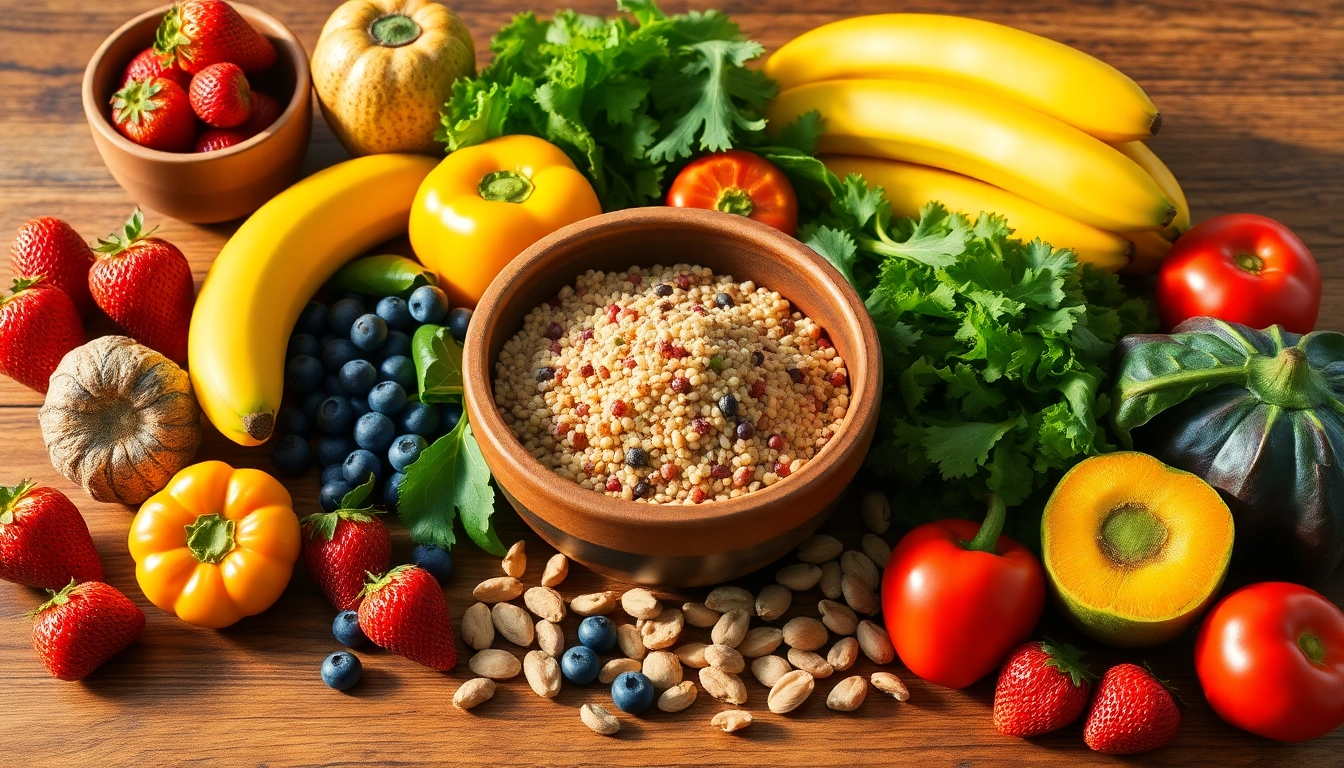10 Ultimate Healthy Food Choices for a Vibrant Lifestyle in 2023

Understanding the Importance of Healthy Food
In today’s fast-paced world, we often overlook the vital role of the food we consume. Many of us associate healthy eating with dieting or restrictive practices, but it’s imperative to recognize that healthy food is essential for overall wellness and longevity. Embracing Healthy Food can enhance not only our physical health but also our mental clarity and emotional stability.
What Constitutes Healthy Food?
Healthy food generally refers to nutrient-dense options that provide the body with essential vitamins, minerals, and other nutrients needed for optimal functioning. This encompasses a variety of food groups including:
- Fruits and Vegetables: Rich in vitamins, minerals, and fibers, these foods help support immune function and digestive health.
- Whole Grains: Foods like brown rice, quinoa, and oatmeal provide complex carbohydrates and essential nutrients while keeping us full longer.
- Lean Proteins: Options like chicken, fish, legumes, and nuts are crucial for muscle repair and overall health.
- Healthy Fats: Avocados, olive oil, and nuts contain heart-healthy fats that aid in nutrient absorption and reduce inflammation.
The Benefits of Eating Healthy
Integrating healthy foods into your diet has profound benefits:
- Weight Management: Healthy foods tend to be lower in calories and higher in nutrients, supporting weight loss and maintenance efforts.
- Improved Energy Levels: Foods rich in nutrients provide the energy needed to sustain physical activity and cognitive function throughout the day.
- Reduced Risk of Chronic Diseases: A nutritious diet lowers the risk of conditions like heart disease, diabetes, and certain cancers.
- Mental Health Benefits: Some studies suggest a connection between a healthy diet and reduced symptoms of depression and anxiety.
Common Misconceptions About Healthy Eating
Despite widespread knowledge about healthy eating, several misconceptions persist:
- Healthy Eating is Expensive: While organic produce can be pricier, many whole foods like grains, lentils, and seasonal vegetables are budget-friendly.
- All Fats are Bad: Healthy fats are crucial for bodily function and should not be eliminated from the diet.
- Healthy Food is Tasteless: A plethora of delicious recipes can be crafted with healthy ingredients, making healthy eating enjoyable.
Top 10 Healthy Foods You Should Include in Your Diet
Fruits that Boost Immunity
Citrus fruits like oranges, lemons, and grapefruits are famous for their high vitamin C content, crucial for supporting the immune system. Berries, such as blueberries and strawberries, are loaded with antioxidants, which can help combat oxidative stress in the body.
Vegetables for Better Digestion
Leafy greens like spinach, kale, and Swiss chard are excellent sources of fiber, promoting digestive health and making bowel movements more regular. Cruciferous vegetables, such as broccoli and cauliflower, contain compounds that help detoxify the body.
Whole Grains: Why They Matter
Whole grains like brown rice, quinoa, and barley are packed with fiber, which improves digestion and helps control blood sugar levels. They provide lasting energy, preventing the crash often associated with refined grains.
Creative Ways to Incorporate Healthy Food into Your Meals
Simple Healthy Recipes for Quick Meals
Preparing healthy meals does not have to be tedious. Here are a few quick ideas:
- Quinoa Bowl: Cook quinoa and top it with assorted vegetables, lean protein like grilled chicken, and a drizzle of olive oil.
- Veggie Stir-Fry: Use any leftover vegetables and sauté them with a protein source and soy sauce for a quick meal.
- Oven-Baked Salmon: Bake salmon with herbs and lemon for a nutritious dinner option.
Healthy Snacks That Satisfy
Snacking can be part of a healthy diet. Opt for:
- Nuts and Seeds: These provide healthy fats and protein, keeping hunger at bay.
- Fresh Fruit: A grab-and-go option that’s full of fiber and nutrients.
- Vegetable Sticks with Hummus: A tasty way to incorporate more vegetables into your diet.
Meal Prep Tips for Healthy Eating
Meal prepping can help streamline healthy eating habits:
- Plan Your Meals: Outline your meals for the week ahead of time.
- Batch Cook: Prepare large quantities of grains, proteins, and vegetables to be used throughout the week.
- Portion Control: Use clear containers to portion out meals, making them easy to grab.
Understanding Nutritional Labels on Healthy Foods
Deciphering Ingredients in Healthy Products
Reading nutritional labels is crucial for making informed decisions. Pay attention to:
- Serving Size: Understanding how many servings are in a package helps gauge caloric intake.
- Ingredients List: Look for whole foods at the top of the list, and be cautious of added sugars and preservatives.
The Role of Organic Labels
Products labeled as organic must meet strict guidelines, including the absence of synthetic fertilizers and pesticides. While organic foods can be more expensive, they are often considered healthier due to their higher nutrient levels and lower chemical residue.
How to Spot Marketing Traps in Food Advertising
Food advertising can be misleading. Be wary of terms like ‘natural’ or ‘multigrain,’ which do not necessarily mean the product is healthy. Always check the ingredient list and look for credible certifications.
Common Challenges in Maintaining a Healthy Food Diet
Overcoming Cravings for Unhealthy Foods
Cravings are a natural part of the human experience. Strategies to mitigate them include:
- Identify Triggers: Recognize what situations or emotions lead to cravings.
- Maintain Balanced Meals: Ensure meals are satisfying and packed with nutrients to reduce cravings.
- Healthy Substitutes: Satisfy sweet cravings with fruits or yogurt instead of sugary snacks.
Budget-Friendly Healthy Eating Tips
Healthy eating doesn’t have to drain your wallet:
- Buy in Bulk: Purchasing staple items in bulk can save money over time.
- Seasonal Produce: Opt for fruits and vegetables that are in season for better prices.
- Plan Meals Around Sales: Coordinate your grocery list based on what’s on sale each week.
Building a Support System for Healthy Eating
Maintaining healthy eating habits can be challenging without support. Here are some steps to foster a supportive environment:
- Engage Family and Friends: Share your goals with loved ones to create accountability.
- Join a Community Group: Look for local or online groups focused on healthy eating.
- Share Recipes: Exchange healthy recipes with friends to keep things fresh and exciting.






